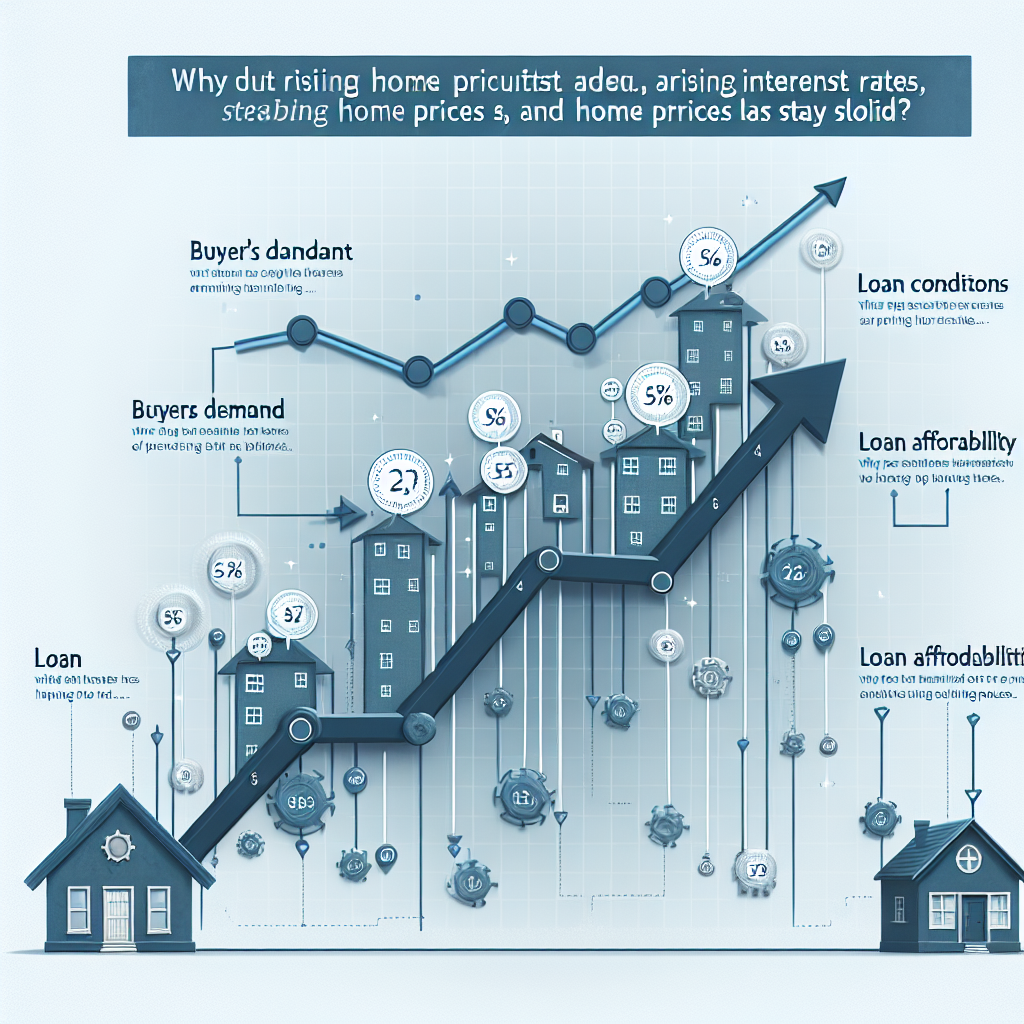Why Home Prices Remain Stable Amid Rising Interest Rates
In recent years, the real estate market has been a focal point of economic discussions, especially as interest rates have seen a steady increase. Conventional wisdom suggests that rising interest rates should lead to a decrease in home prices, as higher borrowing costs typically dampen demand. However, the reality has been more complex, with home prices remaining relatively stable despite these economic pressures. This article explores the factors contributing to this phenomenon and provides insights into the current housing market dynamics.
Understanding the Relationship Between Interest Rates and Home Prices
Interest rates are a critical component of the housing market, influencing both buyers’ purchasing power and sellers’ pricing strategies. Typically, when interest rates rise, the cost of borrowing increases, leading to a decrease in demand for homes. This decreased demand should, in theory, result in lower home prices. However, several factors have contributed to the stability of home prices even as interest rates climb.
Factors Contributing to Stable Home Prices
1. Limited Housing Supply
One of the primary reasons home prices have remained stable is the limited supply of available housing. Several factors contribute to this scarcity:
- Construction Slowdown: The construction industry has faced numerous challenges, including labor shortages and increased material costs, leading to a slowdown in new housing developments.
- Regulatory Hurdles: Zoning laws and other regulatory barriers have made it difficult to increase the housing supply in many areas.
- Existing Homeowners Staying Put: Many homeowners are reluctant to sell their properties due to the uncertainty of finding a new home in a competitive market.
2. Strong Demand from Millennials
The millennial generation, now reaching prime home-buying age, has significantly impacted the housing market. This demographic is characterized by a strong desire for homeownership, driven by factors such as:
- Delayed Homeownership: Many millennials delayed purchasing homes due to economic factors, leading to a pent-up demand.
- Preference for Urban Living: Millennials often prefer urban areas, where housing supply is particularly constrained, further driving up prices.
3. Investor Activity
Investors have played a significant role in maintaining home price stability. With interest rates rising, many investors have turned to real estate as a hedge against inflation, leading to increased competition for available properties. This investor activity has helped sustain demand and support home prices.
Case Studies and Examples
Several regions across the United States illustrate the stability of home prices amid rising interest rates. For instance, in cities like Austin, Texas, and Seattle, Washington, home prices have continued to rise due to strong demand and limited supply. These areas have seen significant population growth, driven by job opportunities and lifestyle preferences, which has offset the impact of higher interest rates.
Statistics Supporting Stable Home Prices
According to the National Association of Realtors, the median existing-home price for all housing types in August 2023 was $375,000, a 3.5% increase from the previous year. This data underscores the resilience of home prices despite the Federal Reserve’s interest rate hikes.
Conclusion
In conclusion, while rising interest rates typically exert downward pressure on home prices, several factors have contributed to the stability of the housing market. Limited supply, strong demand from millennials, and increased investor activity have all played crucial roles in maintaining home prices. As the market continues to evolve, understanding these dynamics will be essential for both buyers and sellers navigating the real estate landscape. Despite economic uncertainties, the housing market remains robust, driven by a complex interplay of supply and demand factors.



